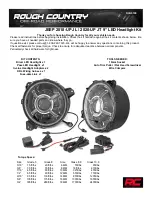
GMC Sierra Owner Manual (GMNA-Localizing-U.S./Canada/Mexico-
9234758) - 2016 - crc - 11/9/15
294
Driving and Operating
N (Neutral) :
Use only when the
vehicle needs to be towed. See
Recreational Vehicle Towing
0
439
or
Towing the Vehicle
0
439
.
2
m
(Two-Wheel Drive High) :
Use
this setting for driving on most
streets and highways. The front axle
is not engaged. This setting
provides the best fuel economy.
4
n
(Four-Wheel Drive Low) :
This
setting also engages the front axle
and delivers extra torque. Choose 4
n
if driving off-road in deep sand,
deep mud, or deep snow, and while
climbing or descending steep hills.
When engaged, keep vehicle speed
below 72 km/h (45 mph).
4
m
(Four-Wheel Drive High) :
Use
this setting when extra traction is
needed. The front axle engages and
helps when driving on snowy or icy
roads, when off-roading, or when
plowing snow.
The vehicle can be shifted between
2
m
and 4
m
while the vehicle is
moving. In extremely cold weather,
it may be necessary to stop or slow
the vehicle to shift into 4
m
.
Using the Manual Transfer Case
.
Use quick motions to shift into or
out of 4
n
or N (Neutral).
.
Shifting may be harder when the
vehicle is cold, but will return to
normal once warmed up.
.
Four-wheel drive reduces fuel
economy.
Shifting from 2
m
to 4
m
.
Shifts can be made at any
vehicle speed.
.
Shift in one continuous motion.
.
Shifting while the vehicle is in
motion may require that
moderate force be applied to the
shift lever before 4
m
can be
engaged, especially in cold
weather.
.
In extremely cold weather, it may
be necessary to slow or stop the
vehicle to shift.
.
While in 4
m
, the vehicle can be
driven at any posted legal speed
limit.
Shifting In or Out of 4
n
Caution
Shifting the transfer case into 4
n
while moving at speeds faster
than 5 km/h (3 mph) may cause
premature wear to the transfer
case, and may cause the gears to
grind.
1. If possible, shift with the
vehicle moving 5 km/h (3 mph)
or less.
2. Shift the transmission into
N (Neutral).
3. Shift the transfer case shift
lever in one continuous motion.
4. Shifting with the vehicle at a
stop may be more difficult. It is
possible that the shift will not
















































